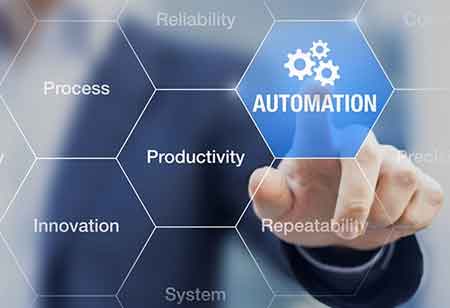THANK YOU FOR SUBSCRIBING
Be first to read the latest tech news, Industry Leader's Insights, and CIO interviews of medium and large enterprises exclusively from Food and Beverage Tech Review
How Has Automation Enhanced the Quality of Protein Processing?
The plant-based rumble shows no sign of slowing down. Even meat and poultry processors are increasingly adopting plant automation to produce good quality products.

By
Food and Beverages Tech Review | Monday, August 31, 2020
Stay ahead of the industry with exclusive feature stories on the top companies, expert insights and the latest news delivered straight to your inbox. Subscribe today.
The plant-based rumble shows no sign of slowing down. Even meat and poultry processors are increasingly adopting plant automation to produce good quality products.
FREMONT, CA: The protein processing technologies are evolving to be highly refined, attractive, and proficient to meat and poultry plant operators. Innovations are enhancing machine efficiencies, growing processing speeds and resulting in increased adoption of automated processing systems. The industry is showing a rise in adoption of fully automated technologies and built-in sensors. The meat processing equipment revenues are expected to rise from $11 billion to $18.8 billion between 2017 and 2025, with a 6.9 percent compound annual growth rate (CAGR).
Machinery will be automated in the future and is expected to be at par with the growing demand for meat, poultry and seafood. However, incorporating that level of automation will depend on the particular manufacturing processes, labor availability, and total cost. The enhancements in process-control already allow precise meat cuts, faster line speeds and reductions in human error, which at the same time cuts down the need to train, manage, and continuously focus on bettering the worker performance. This results in a significant saving in labor cost, which additionally cuts the expense of other proteins, to be more competitive with poultry.
The industry is upgrading to robotic technologies, which are enabling machines to handle irregular items effectively and instantly adjust equipment settings to process meats efficiently. Adaptability is necessary for producing precise cuts without wasting product, as individual meat slabs are generally asymmetrical and can vary in density, size, and shape.
Automated processing technologies, will be more adaptable and modular with robotics getting highly closer to replicating human movements and decisions. Even the meat processors are inclining towards user-friendly programming software, including a unified control which allows easy implementation. This transformation towards automation has created the massive potential for meat and poultry industry to augment production and slim the risk for safety issues, inside and out of the plant. The acceleration in technology will occur to create faster processing, that includes equipment upgrades, which will, in the end, allow converting the meats into ready-to-eat products avoiding the chilling process.
Also see: Top AgTech Solution Companies
I agree We use cookies on this website to enhance your user experience. By clicking any link on this page you are giving your consent for us to set cookies. More info








